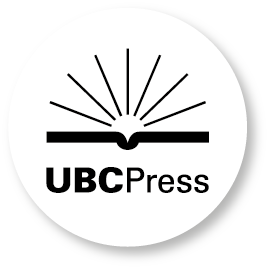
Founded in 1965, the University Press of Colorado is a nonprofit cooperative publishing enterprise supported, in part, by Adams State University, Colorado State University, Fort Lewis College, Metropolitan State University of Denver, University of Colorado, University of Northern Colorado, University of Wyoming, Utah State University, and Western Colorado University.
In 2012, University Press of Colorado merged with Utah State University Press, which was established in 1972. USU Press titles are managed as an active imprint of University Press of Colorado, and they maintain offices in both Louisville, Colorado, and Logan, Utah.
The University Press of Colorado, including the Utah State University Press imprint, publishes forty to forty-five new titles each year, with the goal of facilitating communication among scholars and providing the peoples of the state and region with a fair assessment of their histories, cultures, and resources.
Human Dispersal, Human Evolution, and the Sea
The Palaeolithic Seafaring Debate
Human Dispersal, Human Evolution, and the Sea is the first book-length treatment of what has become known as the global Palaeolithic seafaring debate.
- Copyright year: 2024
Temporalities in Mesoamerican Ritual Practices
Temporalities in Mesoamerican Ritual Practices examines the time-based dimensions of ritual activities in past and present Mesoamerican societies, including the prehispanic, colonial, and modern periods.
Landscapes of Warfare
Urartu and Assyria in the Ancient Middle East
Landscapes of Warfare offers a detailed examination of the Urartian empire. Situated in the highlands of Turkey, Armenia, and Iran and less known than its rival, the Neo-Assyrian empire, Urartu presents a unique case of an empire whose power was not centralized in cities but was instead distributed among mountain fortresses.
- Copyright year: 2024
Beyond Cortés and Montezuma
The Conquest of Mexico Revisited
Beyond Cortés and Montezuma examines both European and Nahuatl texts and images that shed light on the complex narrative of contact and the ensuing conflict, negotiation, and cooperation that continued well after the colonial period.
- Copyright year: 2024
The Duplex Nature of Indigeneity
Navigating Identity in the Ahuehuepan Diaspora
The Duplex Nature of Indigeneity is a detailed ethnography centered on Ahuehuepan, a Mexican town in the Alto Balsas region of the state of Guerrero, where an exodus of more than half the population to the United States and other parts of Mexico has altered both livelihoods and social identities.
- Copyright year: 2024
Maya Blue
Unlocking the Mysteries of an Ancient Pigment
One of the great technological achievements of the ancient Maya, Maya Blue is one the world’s most unusual ancient pigments. In Maya Blue, Dean E. Arnold offers a comprehensive history of its study for almost a century, filled with personal anecdotes drawn from his decades of work uncovering the Maya knowledge of its constituents, its ancient sources, and how it was made—including previously unknown methods.
- Copyright year: 2024
The Other Altar
- Copyright year: 2024
The General History of Peru
Book 1
Mercedarian friar Martín de Murúa’s General History of Peru (Historia General del Piru, 1616) is one of the most significant Spanish chronicles of Inca history and Peru’s early colonial period yet to be published in English. Written over several decades and approved by King Philip III for publication, Murúa’s magnificent manuscript disappeared from public view for nearly 350 years until its publication in 1964. Here, translators Brian S. Bauer, Eliana Gamarra Carrillo, and Andrea Gonzales Lombardi present the first English translation of Book 1 of Murúa’s comprehensive three-part work.
- Copyright year: 2024
The Geysers of Yellowstone
Sixth Edition
This new edition of The Geysers of Yellowstone is the most up-to-date and comprehensive reference to the geysers of Yellowstone National Park, describing in detail each of the more than five hundred geysers in the park.
The Carey Act and Conservation in Colorado
The Carey Act and Conservation in Colorado is an environmental history of the endless missteps and unforeseen consequences that characterized Colorado’s participation in the Carey Act—an 1894 federal law that granted one million acres of desert-classified public land to each western state for private irrigation development and settlement.
- Copyright year: 2024










